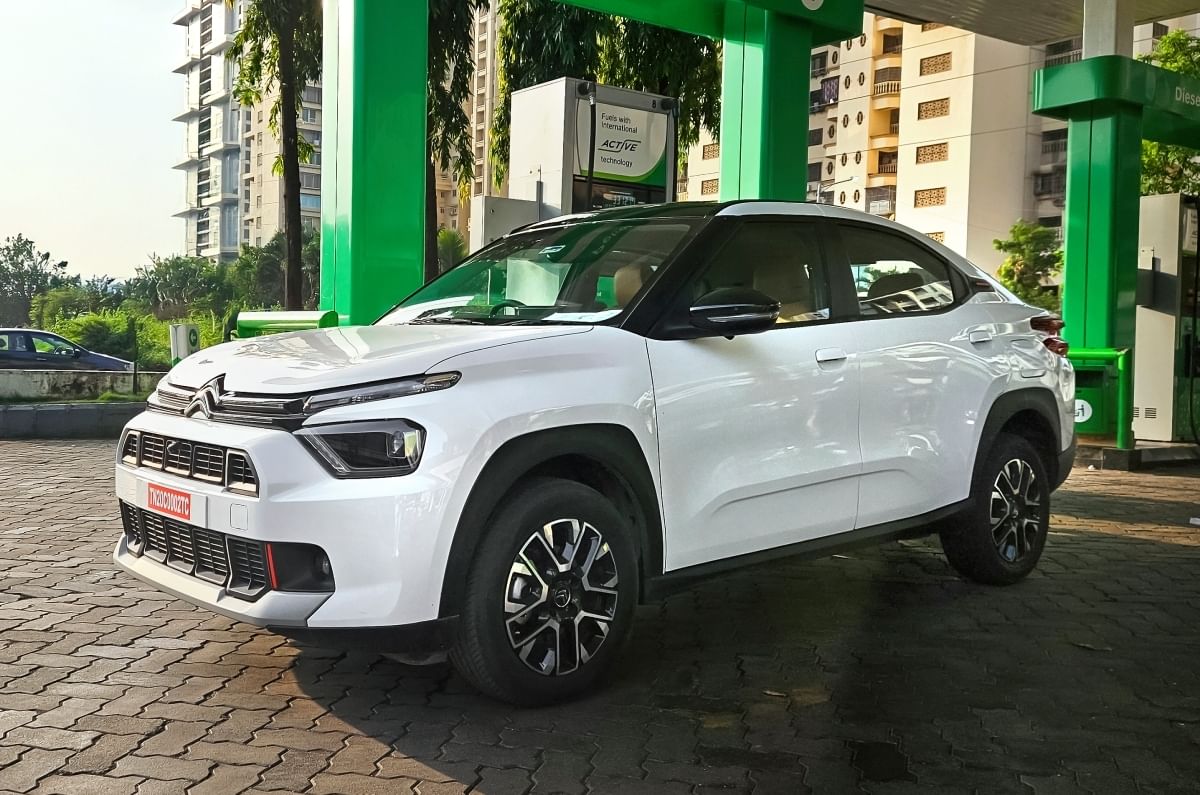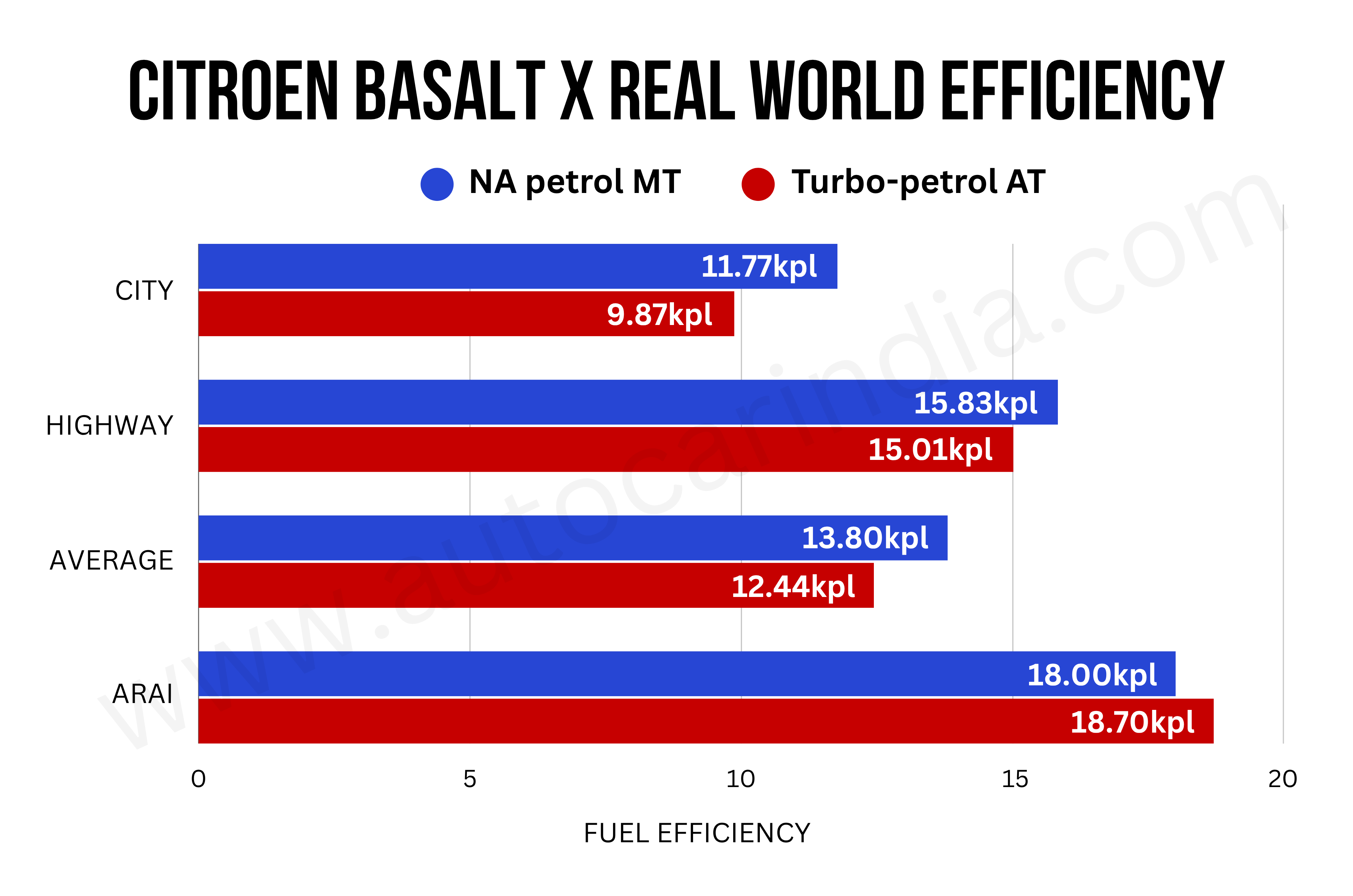
Citroen has breathed new life into the Basalt by introducing a more premium interior, additional features, and a refreshed identity — now called the Basalt X. It’s offered with two engine options: an 82hp, 1.2-litre naturally aspirated (NA) petrol paired with a 5-speed manual gearbox, and a 110hp, 1.2-litre turbo-petrol that comes with either a 6-speed manual or a 6-speed torque converter automatic.
To evaluate how close it comes to the company’s claimed efficiency figures of 18kpl (NA petrol) and 18.7kpl (Turbo-AT), we put both versions through our real-world fuel-efficiency test.
- Turbo-AT gets auto engine stop-start function
- NA petrol weighs 1065-1108kg, Turbo-AT weighs 1233-1240kg
Citroen Basalt X real world milage tests
Basalt NA petrol is more efficient than the turbo-petrol model
| Citroen Basalt X real world mileage test results | ||
|---|---|---|
| Citroen Basalt X real world mileage test results | Basalt X NA petrol-MT | Basalt X turbo-petrol-AT |
| Tested city mileage (kpl) | 11.77 | 9.87 |
| Tested highway mileage (kpl) | 15.83 | 15.01 |
| Tested average mileage (kpl) | 13.80 | 12.44 |
| ARAI mileage (kpl) | 18.00 | 18.70 |
In city conditions, the NA petrol impressed with a respectable 11.77kpl, while the Turbo-automatic managed 9.87kpl. Interestingly, despite the turbo variant’s automatic engine stop-start system, it rarely shut off during idling — the climate control was working overtime to maintain a cabin temperature of 22-degrees centigrade, with ambient temperatures hovering between 35-40 degrees centigrade.

Out on the highway, the NA petrol delivered an even more impressive 15.83kpl, however this time around the Turbo-automatic wasn’t far behind at 15.01kpl. For reference, the Turbo-automatic cruised at 100kph in sixth gear at 2000rpm; the base NA petrol didn’t have a tachometer to note the same.
One of the key factors in the NA petrol’s advantage is its lower kerb weight, ranging between 1,065kg and 1,108kg, compared to the Turbo-AT’s 1,233–1,240kg, which is on par with a top-spec Skoda Slavia 1.0 AT.

Autocar India’s fuel efficiency testing
Before our real-world fuel efficiency tests, we fill our test cars’ tanks to the brim and maintain tyre pressures based on the manufacturer’s recommendation. These cars are driven in fixed city and highway loops in and around Navi Mumbai, and we maintain certain average speeds. Throughout the tests, there is only one person in each car, running the aircon and other electricals, such as the audio system, indicators and wipers, when required, just like a regular user would. Periodic driver swaps further neutralise variations in driver patterns. At the end of each cycle, we calculate efficiency by filling the tanks to full again.
Also see:
Citroen Basalt announced as official safety car, medical car for JKNRC
Which Citroen Basalt X variant should you consider buying?
Skoda Kylaq vs Toyota Taisor Turbo real world mileage compared

